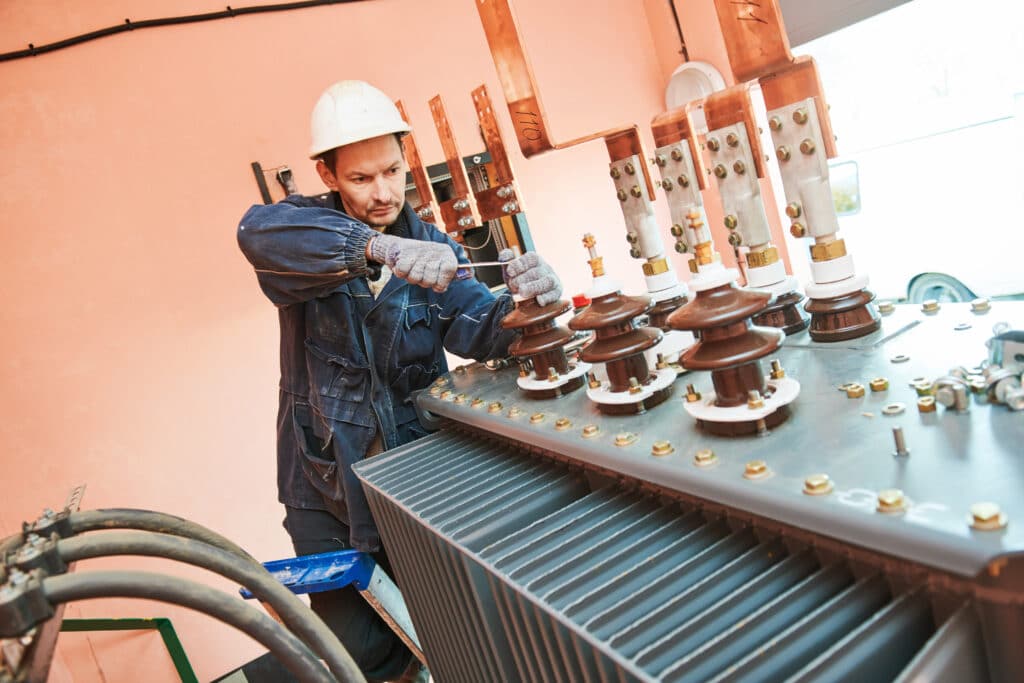Transformer upgrades are a new turn in the world. Regardless of industry, it’s likely that the phrase ‘energy-efficiency’ comes up often in today’s climate. The world is preoccupied with improving energy use and conserving power. Due to current events in Ukraine, discussions around the necessity for energy independence and resourcefulness have become even more essential. So how are major industrial centers and plants working towards better energy use? There are many ways to approach this, and as technology improves, there will likely be more advancements. One way industrial centers or plants aim to save energy is through the use of better equipped and maintained transformers.
We can’t get enough transformer talk around here. So, we thought we’d pay homage to this electrical component and discuss the importance of maintaining these components.
The Transformer in Industrial Settings and Across Industries
Outside of engineering circles and industrial plant managers, discussions around transformers probably don’t happen daily. Yet, the concept that makes a transformer work is used throughout all of our economic devices and equipment.
Through the principles of electromagnetic induction, transformers are set up in a way that they transfer energy from one electric circuit to another. They are designed to decrease or increase AC voltage. They do so without a conductive connection between the two circuits, using the concept of Faraday’s Law of Induction.
Transformer basics:
The basic components include the following:
- Magnetic core
- Primary winding
- Secondary winding
Why Transformer Upgrades or Maintenance Increases Energy Efficiency
Although one of the best in the world, the nation’s electrical infrastructure can quickly become outdated and degraded due to environmental conditions, overuse, or lack of maintenance. As electricity demand grew in the last half of the 20th century, the need for long-lasting electrical infrastructure became necessary.
In the United States, experts suggest that the average lifespan of a transformer on the grid is about thirty-five years old. In ideal conditions, the longevity is estimated at 30 to 40 years. These transformers have a shorter lifespan of about 20 years in industrial settings. And yet, transformers are valuable components and assets of any running operation, so the upkeep and maintenance of transformers should be a top priority for facility managers or operators looking to keep things running longer and more efficiently.
A transformer becomes susceptible to dangerous situations or bad outcomes without proper maintenance. These undesirable scenarios include:
- The risk of failure that leads to fire
- Negligence that leads to other operational issues
- Overloading
- Bad or loosening mechanical connections
- Degradation of insulation
- Long outage periods while a bad transformer is replaced
None of the above are ideal situations in any operational facility, plant, factory, or industrial center. Downtime or slow-downs usually spell disaster for productivity or any operation.
Reasons For A Transformer Upgrade
Other reasons why a transformer upgrade and maintenance can yield positive results have to do with operational efficiency and energy consumption. Transformers are fundamental parts of electricity distribution in many settings as they control the voltage up and down traveling from power plants to individual buildings. Here’s why upgrading your electrical transformer can be beneficial:
- More reliable & better performance. As transformers age and are exposed to the elements or rough conditions, they suffer from loose connections, oil leaks, and damaged insulation. These types of issues can lead to power quality problems and issues with cooling and harmonics. When your transformer is well maintained, it is reliable to keep operations going without downtime or outages. At the same time, a consistently maintained or upgraded transformer performs better because of new manufacturing standards or increased efficiency after maintenance.
- Reduced maintenance costs. It’s more cost-effective to keep a transformer running with constant maintenance. However, as the transformer ages, the risk of failure, leaking, and aged gaskets can increase, requiring more maintenance.
- Better energy efficiency. When plants and electrical systems are regularly maintained, they function more effectively. This is true when it comes to how they use and produce energy.
- Reduce the environmental impact. Although transformers are considered highly efficient electrical devices, the efficiency rating can go up to 97% when upgrading or carefully maintaining these components. The U.S. Department of Energy updated the transformer efficiency standards in 2016. These standards don’t force facilities to upgrade their transformers but encourage it. However, transformers manufactured after that date are now required to follow the minimum efficiency standards outlined by the document. This applies to low-voltage dry-type, medium-voltage, dry-type, and liquid-filled transformers.
Learn More About Industrial Services with Remsa USA
The need for high-functioning and reliable transformers applies across all industries. Whether it’s mining, agriculture, or other industrial settings, electricity production for operations keeps things running smoothly.
At Remsa USA, we serve a variety of industries in the energy sector and across the board. We offer qualified transformer upgrades maintenance and repair. Need to learn more? Call Remsa USA today.
